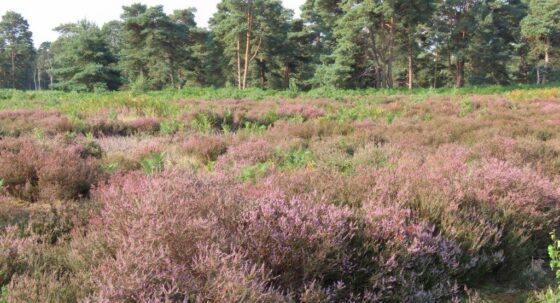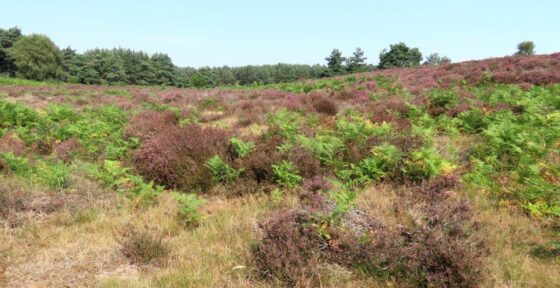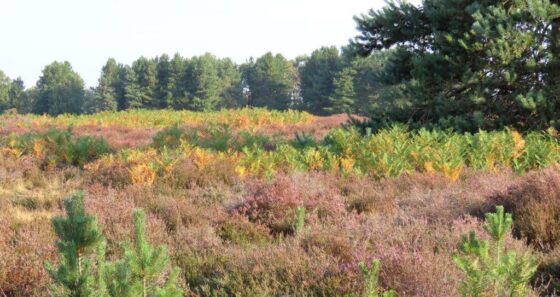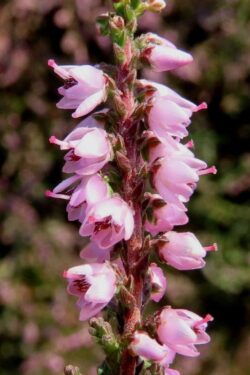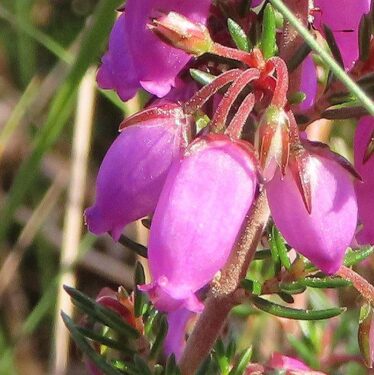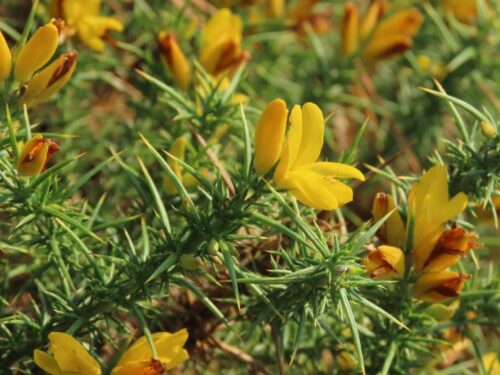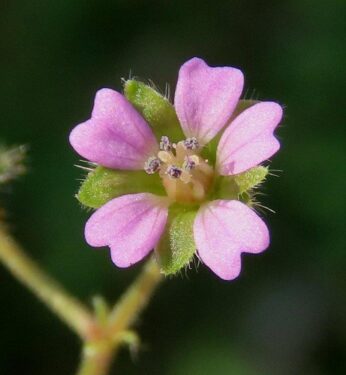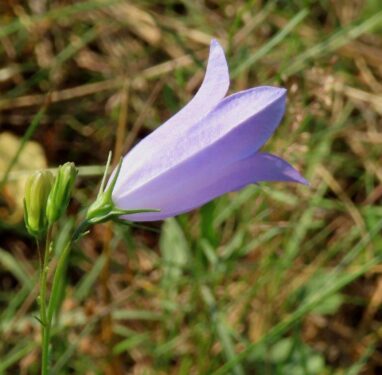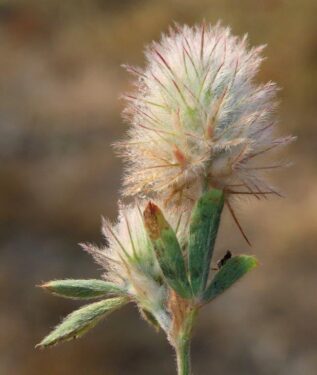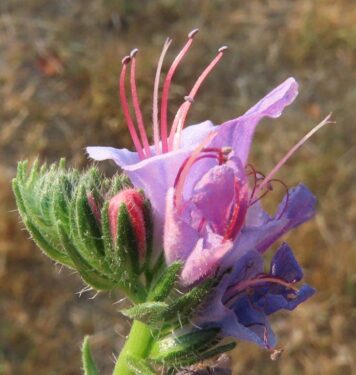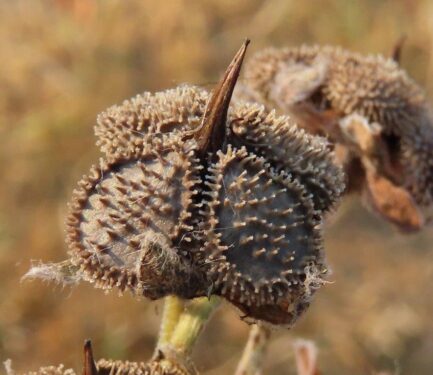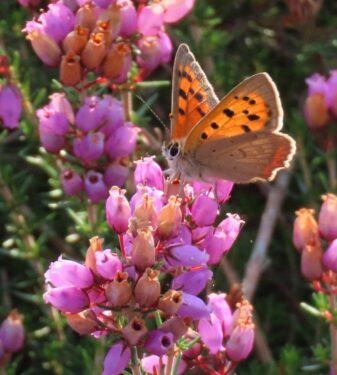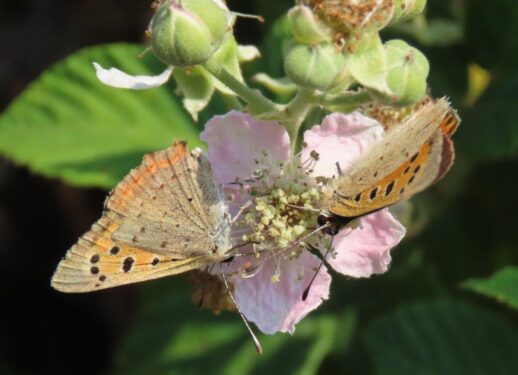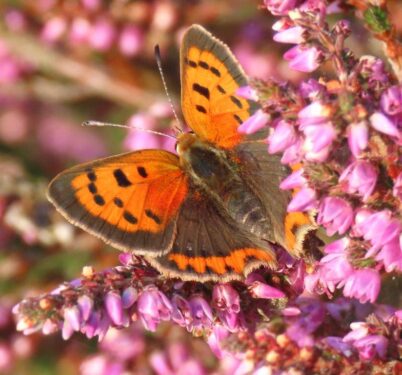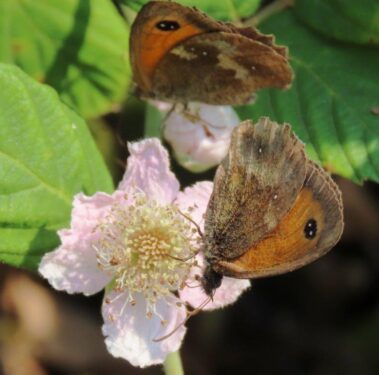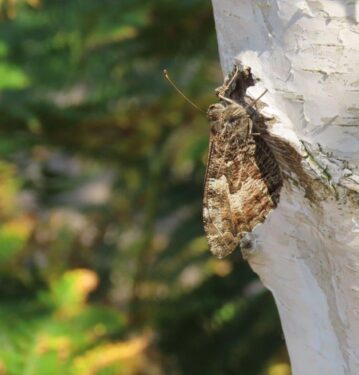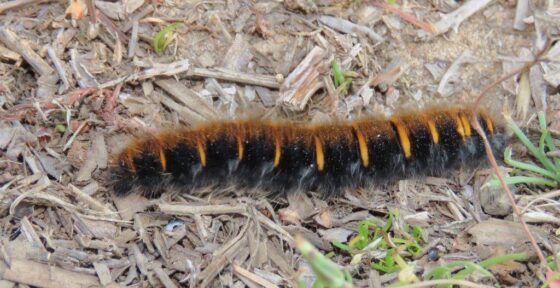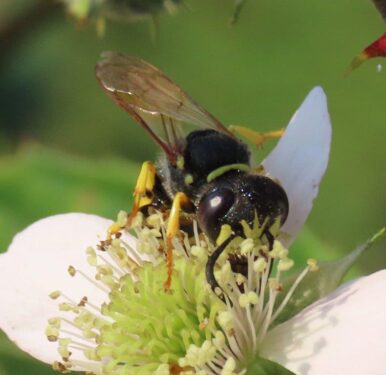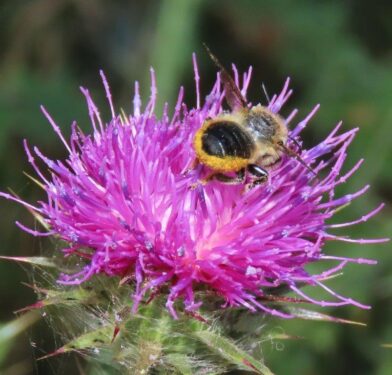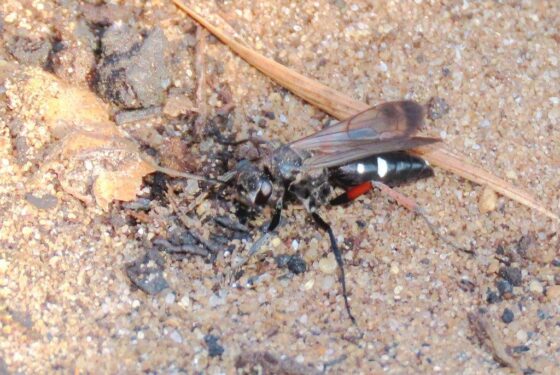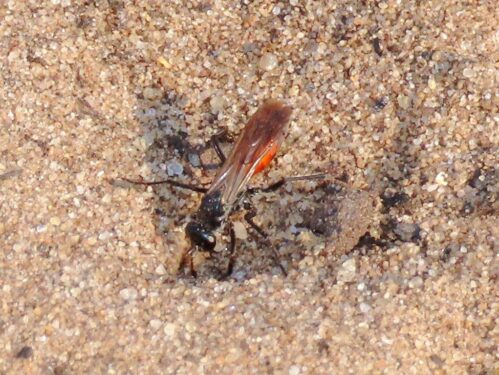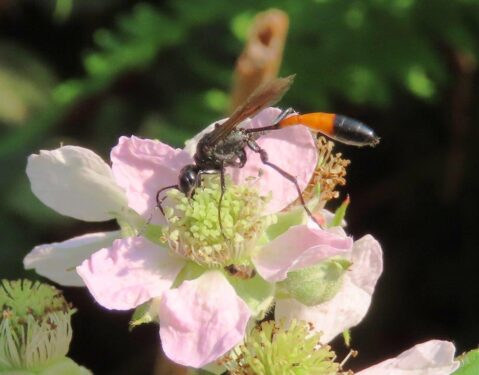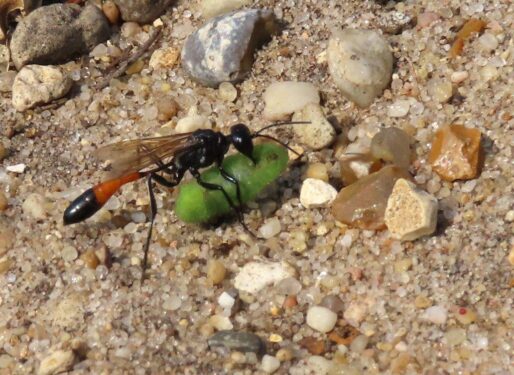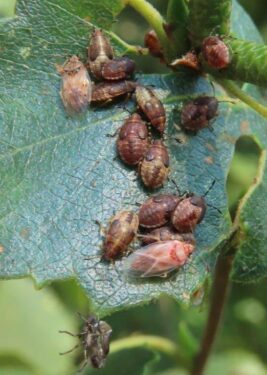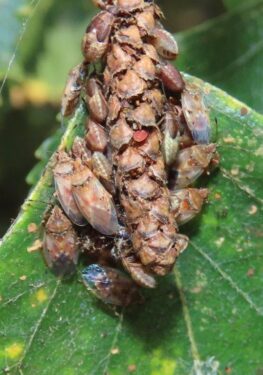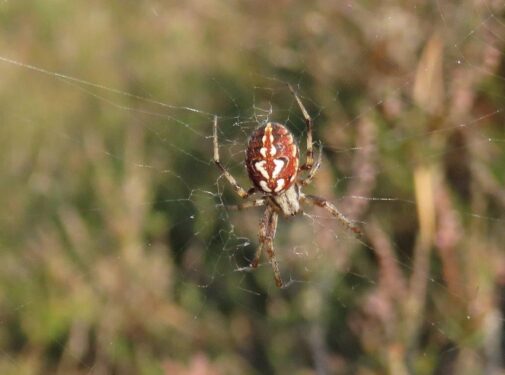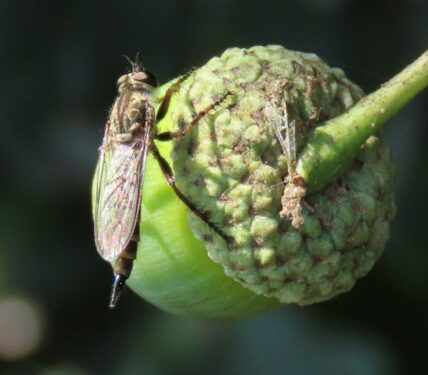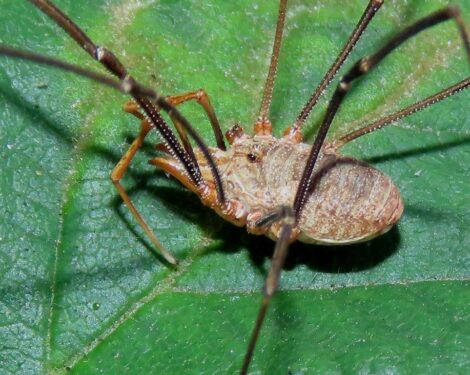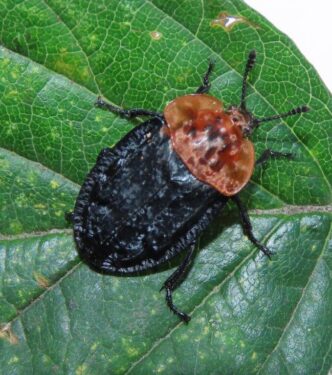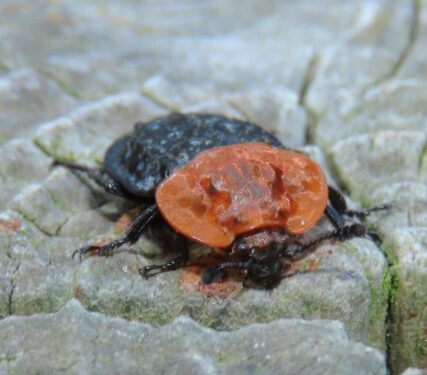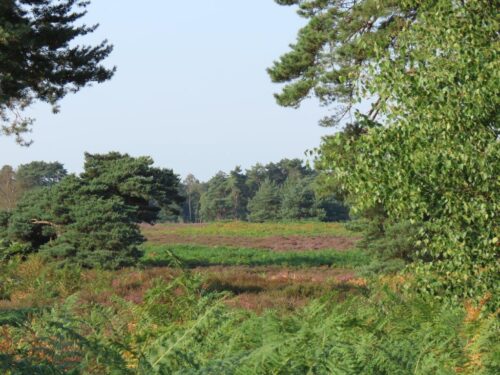Drawn to the South Suffolk Sandlings again, on one of the hottest days of the year. Too hot for many things – people, birds, reptiles and even many of the insects were lying low for respite.
In one of the driest parts of the country, these heaths are drought-prone, and their plants have to be drought-tolerant. Two heathers form the backbone of the floral landscape: Ling and Bell Heather, both in good flower (the latter just past its best and the former working up to its peak), along with Bracken and Western Gorse. Lower, spinier, deeper yellow and restricting its flowering to late summer, in contrast to Common Gorse, if ‘kissing is in season when Western Gorse is in flower’, life would be lonely….
In the grip of the second drought of the summer, just a handful of other flowers (Harebell, Viper’s-bugloss, Hare’s-foot Clover and Small-flowered Crane’s-bill) were showing, alongside dried-up fruits (Hound’s-tongue). What a selection of ‘animal plants’!
Small Coppers were everywhere, colour-clashing furiously with the heather, and also homing in on the nectar of last few Bramble flowers…
…which they were sharing with the last of the battered Gatekeepers.
Graylings were still abundant out on the open heaths, their camouflage well suited to lichen backgrounds. In the heat, many were also retreating into the shade of the trees, settling on trunks as they and related species are prone to do around the Mediterranean; wandering Fox Moth caterpillars were probably seeking shade likewise:
One insect group showing no signs of heat stress were the bees and wasps, from Bee-wolves to leaf-cutters and spider-hunters of many a kind.
Sand Wasps were particularly abundant, feeding themselves on Bramble, and provisioning their nests with paralysed caterpillars:
In the windless calm, a constant ‘pitter-patter’ among the birches was not as I had expected the rain of caterpillar frass, but the sound of Birch Catkin-bugs falling from the aggregations of both nymphs and adults. A swarm on a leaf is easy to see, but on a catkin, the bugs are much more difficult to discern – it is as though the catkin was budding bug nymphs instead of shedding seeds:
A selection of the other invertebrates includes the south-eastern heathland spider Neoscona adianta…
… but best of all was the Red-breasted Carrion Beetle. Never seen this before, although it seems to be pretty widespread in Norfolk and Suffolk. An absolute cracker!
